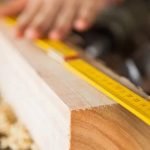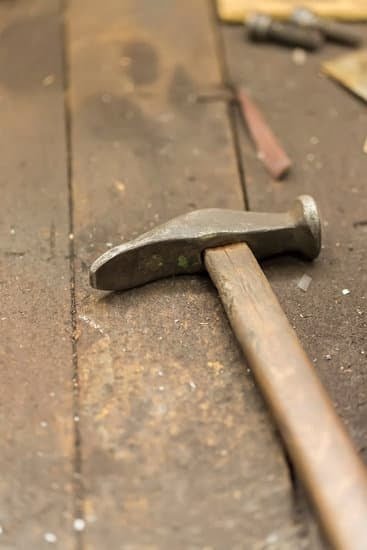Woodworking enthusiasts often ponder the question, “What is the best wood glue for woodworking?” Whether you are building furniture, crafting cabinets, or engaging in other woodworking projects, the type of wood glue used can significantly impact the outcome of your creation. In this article, we will delve into the importance of using the right wood glue in woodworking projects and explore the various aspects to consider when selecting the best wood glue for your specific needs.
When it comes to woodworking, selecting the right type of wood glue is crucial for ensuring strong and durable bonds between different pieces of wood. With a wide range of wood glues available in the market, it’s important to understand the distinct characteristics and uses of each type to make informed decisions that align with the requirements of your woodworking projects.
From traditional yellow glues to specialized waterproof adhesives, knowing which wood glue is best suited for your project can make a significant difference in its overall quality and longevity.
As we embark on this exploration, we will discuss the different types of wood glue available in today’s market and their specific applications. Additionally, we will examine key factors to consider when choosing the best wood glue for diverse woodworking projects. By gaining insights into these essential components, woodworking enthusiasts can enhance their understanding of how to select and utilize wood glues effectively in various woodworking applications.
Types of Wood Glue
Wood glue is a crucial component in woodworking projects, as it helps to create strong and durable bonds between wood pieces. When it comes to choosing the best wood glue for woodworking, there are several types available in the market, each with its own specific uses and advantages. Understanding the different types of wood glue can help woodworkers make informed decisions based on the requirements of their projects.
One of the most common types of wood glue is PVA (polyvinyl acetate) glue, which is known for its strong bonding properties and versatility. This type of glue is ideal for general woodworking tasks such as furniture making, cabinet construction, and wood crafting. It dries clear and is easy to sand, making it suitable for use on various wood surfaces.
For more specialized woodworking projects, polyurethane glue can be an excellent choice. This type of wood glue is waterproof and resistant to heat, making it suitable for outdoor furniture, marine applications, and high-moisture environments. It also expands as it dries, filling in any gaps or irregularities in the wood joints for a strong bond.
Another popular type of wood glue is epoxy resin, which is known for its exceptional strength and durability. Epoxy resin can be used for bonding different materials besides wood, such as metal or glass. It provides a tough, long-lasting bond that can withstand heavy loads and extreme conditions.
When choosing the best wood glue for a woodworking project, it’s important to consider factors such as the type of wood being used, exposure to moisture or temperature fluctuations, curing time, and flexibility. By understanding the specific uses and advantages of each type of wood glue available in the market, woodworkers can make informed decisions to achieve successful outcomes in their projects.
| Wood Glue Type | Specific Uses |
|---|---|
| PVA (Polyvinyl Acetate) Glue | General woodworking tasks such as furniture making, cabinet construction |
| Polyurethane Glue | Outdoor furniture, marine applications, high-moisture environments |
| Epoxy Resin | Exceptional strength and durability; bonding different materials apart from just wood |
Factors to Consider
Project Specificity
When selecting the best wood glue for a woodworking project, it is essential to consider the specific requirements of the project. Different types of wood glues are formulated for specific applications, such as indoor or outdoor use, furniture making, joinery, or general carpentry. For example, if you are working on an outdoor project, you will need a waterproof wood glue that can withstand varying weather conditions.
Drying Time
The drying time of the wood glue is another critical factor to consider. Some woodworking projects may require quick bonding and minimal waiting time, while others may allow for longer curing periods. Understanding the drying time of different wood glues can help in choosing the most suitable product based on the project’s timeline and requirements.
Bond Strength and Flexibility
The bond strength and flexibility of the wood glue are crucial factors that determine its suitability for specific woodworking applications. For load-bearing structures or heavy-duty furniture making, a wood glue with high bond strength and flexibility is essential to ensure structural integrity and longevity. On the other hand, projects that involve curved or uneven surfaces may benefit from a more flexible wood glue that can adapt to the shape of the materials being bonded.
Considering these factors when choosing the best wood glue for woodworking projects can significantly impact the overall quality and durability of the finished products. By understanding the project specificity, drying time, bond strength, and flexibility requirements, woodworkers can make informed decisions about selecting the most suitable wood glue for their particular applications.
Top Wood Glues in the Market
When it comes to choosing the best wood glue for woodworking projects, it’s essential to consider the specific features, pros, and cons of each product available in the market. One popular option is Titebond III Ultimate Wood Glue, known for its waterproof and strong bond, making it suitable for both indoor and outdoor woodworking projects. This type of wood glue is also FDA-approved for indirect food contact, adding to its versatility and reliability.
Another top contender in the market is Gorilla Wood Glue, which is known for its fast-drying formula and excellent adhesive strength. This type of wood glue is ideal for quick woodworking projects where a strong bond is required in a short amount of time. However, some users have reported that it can be challenging to remove excess dried glue from surfaces.
For those looking for a more budget-friendly option, Elmer’s E7010 Carpenter’s Wood Glue offers a reliable adhesive solution at an affordable price point. While it may not have the same level of water resistance as other premium wood glues, it still provides a strong bond for most indoor woodworking applications.
Overall, when considering what is the best wood glue for woodworking, it’s important to evaluate the specific needs of each project and choose a product that aligns with those requirements. Whether it’s water resistance, fast drying time, or affordability, there are various top wood glues available in the market to suit different woodworking needs.
Application Tips
Applying wood glue effectively is crucial in ensuring the strength and durability of woodworking projects. Here are some useful tips and techniques to consider when using wood glue for your next woodworking endeavor:
- Surface preparation: Before applying wood glue, it is essential to ensure that the surfaces to be joined are clean, free from dust, and properly fitted together. Any debris or loose particles can affect the bonding quality of the glue.
- Even application: When applying wood glue, make sure to spread it evenly across the entire surface area to be bonded. This can be achieved using a brush, roller, or even a glue spreader, ensuring that every part of the joint has a consistent layer of adhesive.
- Clamping pressure: After applying the wood glue, adequate clamping pressure is necessary to create a strong bond. Use clamps to hold the pieces together firmly while the glue sets. Be mindful not to over-tighten the clamps, as this may squeeze out too much adhesive and weaken the bond.
In addition to these tips, it’s also important to consider the open time and working temperature of the wood glue being used. Some glues have a shorter open time, requiring quicker assembly of parts, while others are better suited for higher or lower temperature environments. By paying attention to these factors and following proper application techniques, you can maximize the effectiveness of your chosen wood glue for woodworking projects.
Ultimately, no matter what type of project you’re working on – whether it’s furniture making, cabinetry, or intricate woodcraft – using the best wood glue for woodworking will ensure that your creations stand the test of time. So take these application tips into consideration and choose your wood glue wisely for optimal results in your woodworking endeavors.
Case Studies
When it comes to woodworking, the choice of wood glue can significantly impact the quality and durability of the final project. To understand the importance of using the right wood glue for different woodworking projects, let’s take a closer look at some real-life examples or case studies where specific types of wood glue were used to achieve different outcomes.
Example 1: Furniture Making
In furniture making, where strong and long-lasting bonds are crucial, many woodworkers prefer using polyurethane glues. This type of wood glue has excellent strength and water resistance, making it suitable for outdoor furniture or pieces that may be exposed to moisture. It also provides a slightly flexible bond, which can be beneficial for certain furniture designs that may experience slight movement over time.
Example 2: Woodturning Projects
For woodturning projects such as creating bowls or spindles, cyanoacrylate (CA) glue is often the go-to choice. CA glue dries quickly and forms a strong bond, which is essential when working with small turned pieces. Woodworkers can also find formulations of CA glue that are specifically designed for bonding wood, ensuring a reliable hold for turning projects.
Example 3: Joinery and Cabinet Making
When it comes to joinery and cabinet making where precise assembly and high-stress areas are common, aliphatic resin glue, also known as yellow glue, is frequently used. This type of wood glue offers a strong initial tack and creates robust bonds on various wood species commonly used in cabinetry. Its ease of application and ability to sand off excess make it a preferred choice in these woodworking applications.
By understanding these real-life examples of woodworking projects and the type of wood glue used for each project, woodworkers can gain insights into the best practices for selecting the most suitable wood glue for their specific applications. Each project’s demands vary based on factors such as environmental exposure, stress on joints, or finishing requirements, making it essential to choose the right wood glue accordingly.
Expert Recommendations
When it comes to woodworking, choosing the right wood glue is crucial for ensuring the strength and durability of the final project. Different woodworking applications may require different types of wood glue, and gathering insights and recommendations from woodworking experts can help in making the best selection. Woodworking experts often have extensive experience with various wood glues and can provide valuable recommendations based on their knowledge and expertise.
One important factor to consider when seeking expert recommendations is the specific type of woodworking project at hand. Different projects, such as furniture making, cabinetry, or woodturning, may require different types of wood glue due to varying structural needs and environmental considerations. Expert recommendations can highlight which wood glues are best suited for specific applications, taking into account factors such as open time, drying color, and resistance to moisture or heat.
In addition to considering the type of woodworking project, it’s also essential to factor in the type of wood being used. Some woods may be more porous than others or have natural oils that can affect how well certain wood glues adhere. With expert recommendations, woodworkers can gain valuable insights into which wood glues work best with specific types of wood, ensuring a strong and long-lasting bond between pieces.
| Woodworking Project | Recommended Wood Glue |
|---|---|
| Furniture Making | PVA (Polyvinyl Acetate) Glue |
| Cabinetry | Aliphatic Resin Glue (Yellow Glue) |
| Woodturning | Cyanoacrylate (CA) Glue |
Conclusion
In conclusion, choosing the best wood glue for woodworking projects is crucial for achieving successful and durable outcomes. As discussed, the type of wood glue used can significantly impact the strength, longevity, and overall quality of the woodworking project. By understanding the different types of wood glue available, considering key factors such as project requirements and material compatibility, and evaluating top wood glues in the market, woodworkers can make informed decisions to ensure their projects stand the test of time.
When it comes to selecting the best wood glue for woodworking, there are several factors to keep in mind. From the specific requirements of the project to the characteristics of different wood glues, it is essential to consider all aspects before making a choice. Additionally, application tips and techniques play a crucial role in ensuring that the chosen wood glue is used effectively for optimal results.
Expert recommendations from skilled woodworking professionals can also provide valuable insights into choosing the right wood glue for various woodworking applications. Their firsthand experiences and suggestions can further guide enthusiasts and professionals alike in making informed decisions when it comes to selecting the most suitable wood glue for their specific projects. Ultimately, by paying attention to these considerations and seeking expert advice, individuals can confidently choose the best wood glue for their woodworking endeavors.
Frequently Asked Questions
What Is the Strongest Glue for Wood to Wood?
The strongest glue for wood to wood is typically considered to be polyurethane adhesive, such as Gorilla Glue. This type of glue forms a very strong bond with wood and is resistant to water, making it suitable for outdoor or high-moisture applications.
Is Gorilla Glue Better Than Wood Glue for Wood?
When it comes to comparing Gorilla Glue and traditional wood glue for wood-to-wood bonding, it really depends on the specific project and requirements. While Gorilla Glue can be very strong and versatile, traditional wood glue may still be preferred for certain woodworking applications due to its ease of use and less messiness.
Do Carpenters Use Wood Glue?
Yes, carpenters commonly use wood glue in their projects. Wood glue is an essential tool for carpentry work as it helps create strong and durable bonds between wooden pieces, whether it’s for furniture making, cabinetry, or general woodworking projects. Due to its versatility and reliability, wood glue is a staple in the toolkit of many carpenters.

Hi everyone! I’m a woodworker and blogger, and this is my woodworking blog. In my blog, I share tips and tricks for woodworkers of all skill levels, as well as project ideas that you can try yourself.





